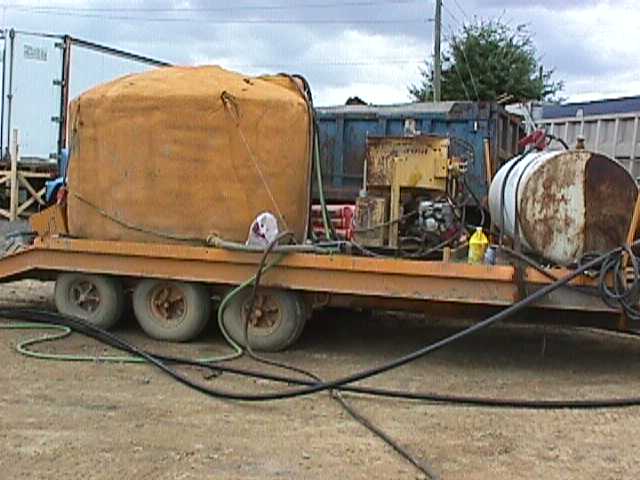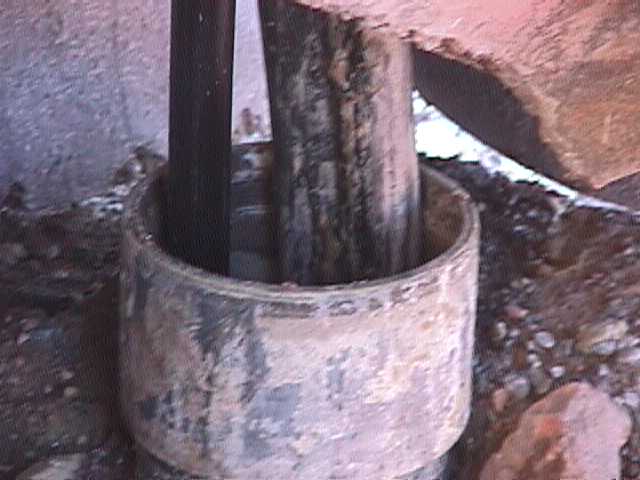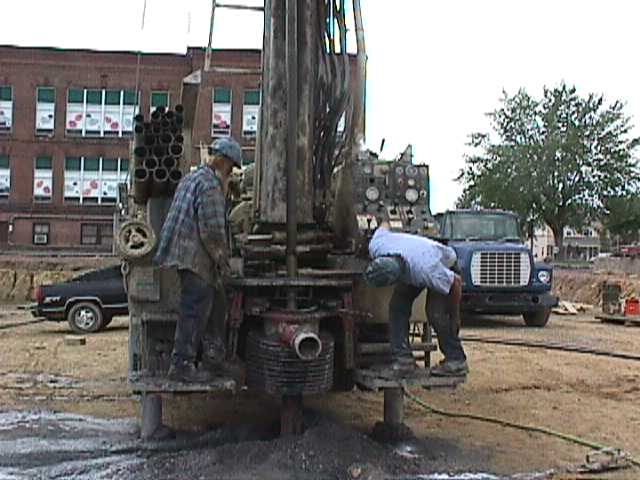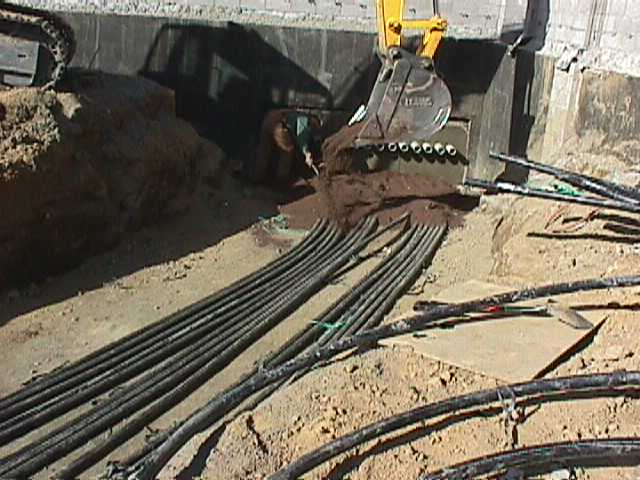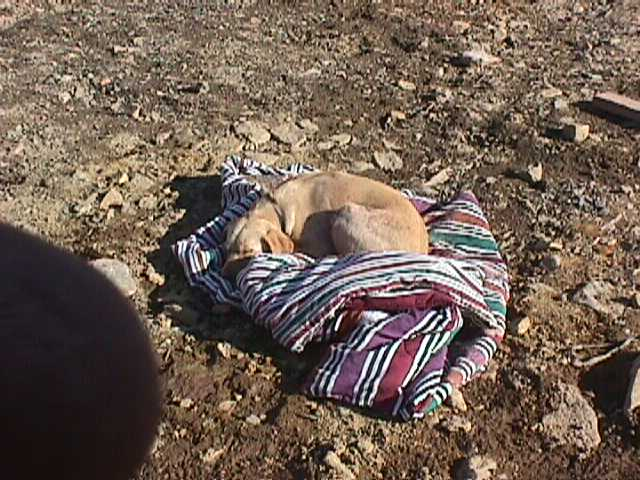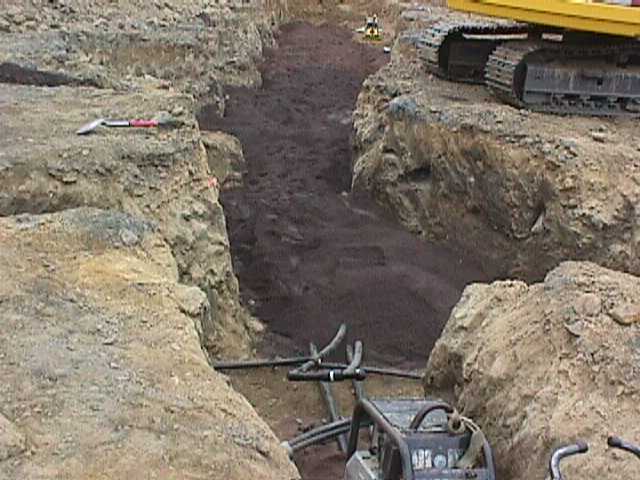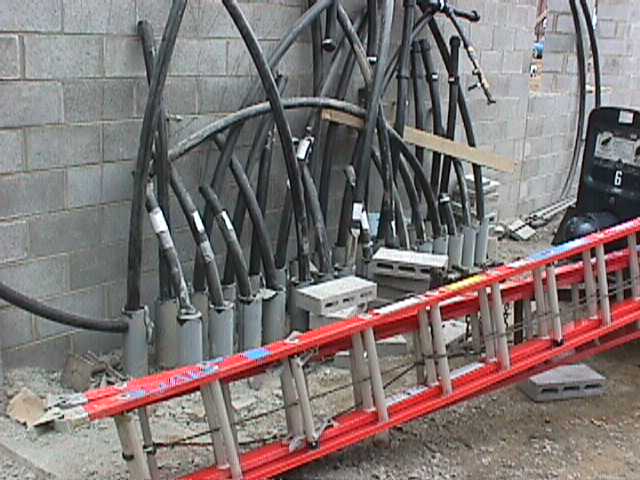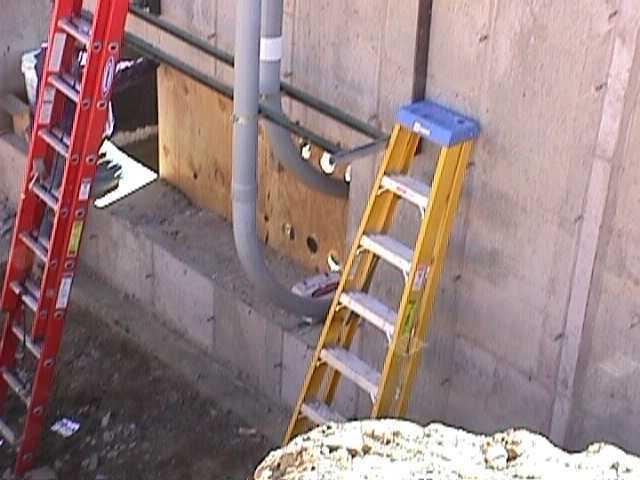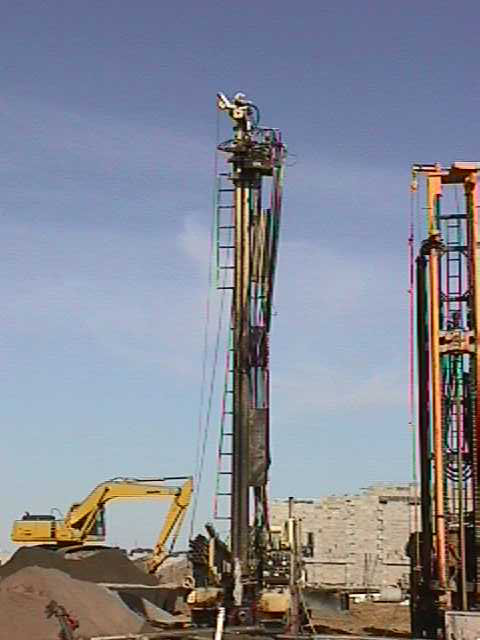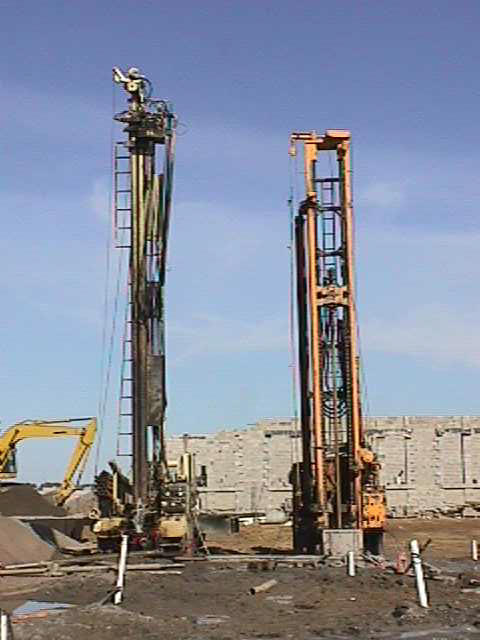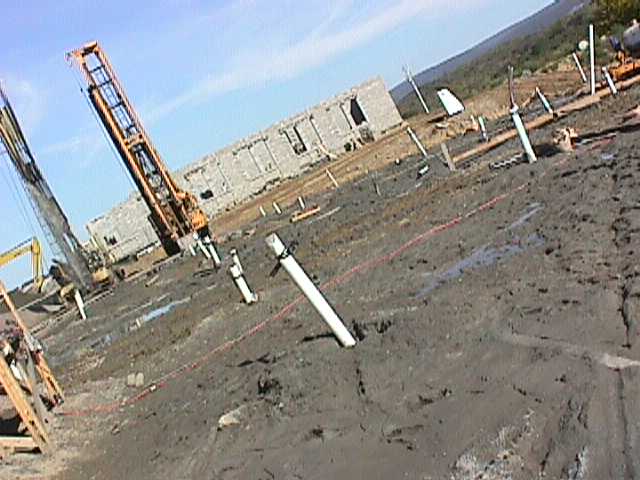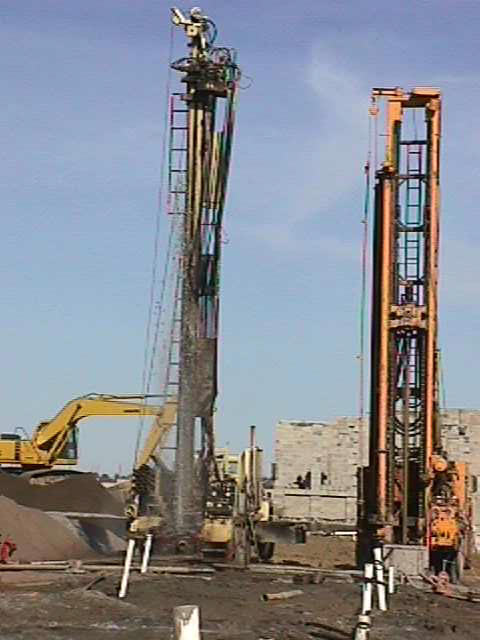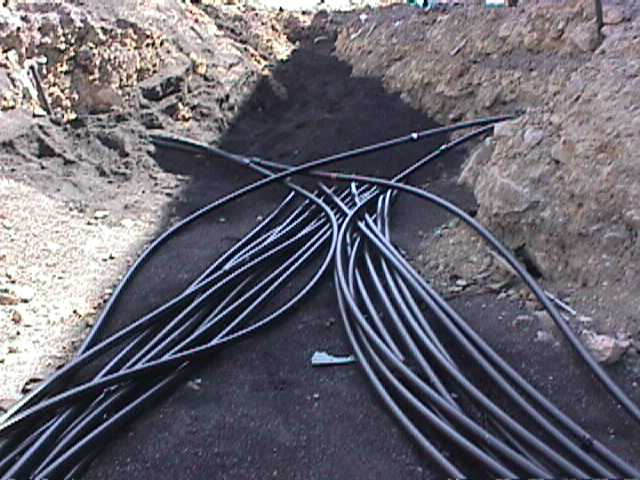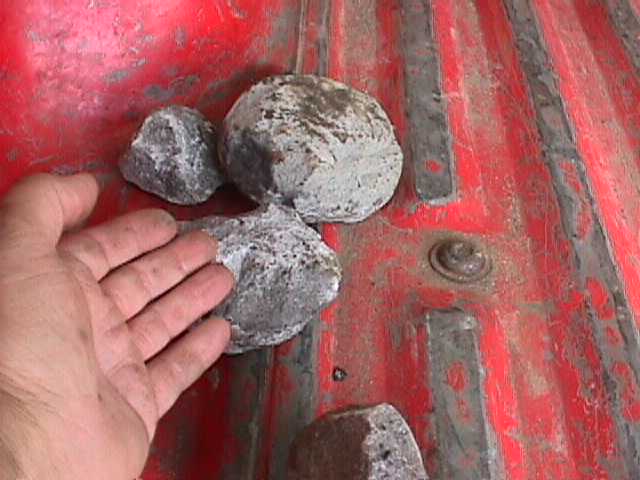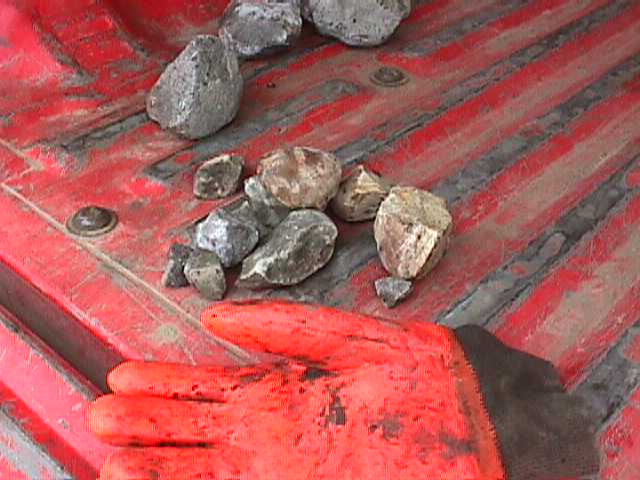 |
|
|
|
Case Study Nanticoke School District
These are some pictures from the job.
Because of the close proximity, and sheer number of holes, everything that wasn't on wheels needed to be kept off the ground to keep it out of the mud. This is a picture of our refueling station and grouting station (makeshift) all in one. We used about 550 Gallons of Diesel fuel every 3 days in the two machines we had drilling at this site. Scheduling problems abound. We had a schedule to drill 60 holes in 60 calendar days. In the first 30 days we were only able to drill 15 due to a number of tooling problems such as inadequate tooling and tool breakage. At the end of the first 30 days we brought in a second machine to pick up the slack and finished all 60 holes two days early. The drilling conditions were bad to say the least. There was about 80 feet worth of sand and baseball sized gravel with a lot of water to make things even worse. (see the pictures of the gravel later on in this page) We were able to drill all 60 holes and not leave any casing in any of the holes. Through trial and error we have managed to develop a type of casing that we can set in conditions like these and pull back with the minimum amount of effort. After drilling the hole, when it is time to remove the casing it usually just requires a small tug from the hoist proved on the machine and we're off the the next hole not incurring any extra costs for the customer or our company through lost casing. (As a matter of fact, lost casing isn't in any of our contracts. If we loose casing, it's on us)
Below is just some of the trenches that we had to construct to hook all the header pipe together. Some things to note. The sweep elbows that we used to provide some support to the loop pipes where they made the 90 degree turn from a vertical position to the horizontal ditch. This prevented kinking the pipes. Another thing to note is the sheer number of pipes that had to be brought into the building. We had a header trench 8' deep and 16' wide to carry all the 2" header pipe into the building. And even then we had to separate it into two layers, one for the supply and the second layer for the return. Also, the 4" sewer and drain pipe that is sticking up in the middle of the picture was a temporary conduit that we installed after grouting, as so the excavator wouldn't dent any of the loop pipes while digging, these pipes were removed after the ditches were dug and the electrical sweep elbows were put into place over the loop pipe.
Just a picture of our T-2 machine in operation.
This is where an experienced operator can make or break a job. The backfill must be put in place carefully so the pipes don't kink and a sand type bedding is always recommended to keep the rocks and other harmful material away from the pipes. This area where the loops are is going to be the school's parking lot when everything is finished , so everything must be layered and compacted to specs.
Warning tape is a must.
More pictures of the backfilling process.
These are the 2" pipes from a view on the inside of the building. At the projects finish there will be two 4" pipes running horzontally across the loop pipes joining all the pipes together.
Just a shot of how the conduit was put into the walls. It was much easier to leave one large hole, brace the conduit, then re-pour the wall then it was to drill all these holes out, and easier than putting the bracing in mid-air when the first segment of the wall was poured.
A shot of our two machines. Later there is a picture of what happens in certain situations when you get two machines too close.
As you can see the taller machine is having a time with the water shooting out of the hole. At first glance one might think that this machine was just blowing a 'head' of water out of the hole, but that machine is actually shut down with nothing in the hole. The other machine is actually making this happen. The exhaust from the drilling bit from the yellow machine is finding a crack in the rock and blowing cuttings and water out of the other machine's hole. (luckilly there weren't any loop pipes in the hole yet) Conditions like these are the reason it pays to have a company that has a lot of experience in many different conditions. It's also a shot of the loop field (this is only about 1/2 of the total loops) and it's under parking lot now.
|









